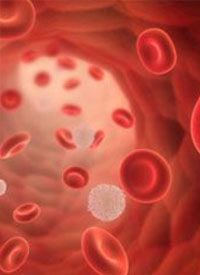First-in-Class LSD1 Inhibitor Elicits Clinical Activity in Advanced Myelofibrosis
Findings from a phase 2 study presented during the 2020 European Hematology Association Congress shed light on the first-in-class, investigational lysine-specific demethylase-1 inhibitor, bomedemstat, along with its promising clinical activity and tolerable safety profile as monotherapy in patients with advanced myelofibrosis.

The first-in-class, investigational lysine-specific demethylase-1 (LSD1) inhibitor bomedemstat (IMG-7289) demonstrated promising clinical activity and a tolerable safety profile as monotherapy in patients with advanced myelofibrosis, according to findings from a phase 2 study presented during the 2020 European Hematology Association (EHA) Congress.1
Of 12 evaluable patients who received the full 24-week regimen of bomedemstat, 83% experienced a reduction in spleen volume.
“Inhibition of LSD1 is a novel way to target cytokine production and fibrogenesis in patients with myelofibrosis,” said Kristen Marie Pettit, MD, an assistant professor at the University of Michigan, Michigan Medicine Bone Marrow Transplant and Leukemia, C.S. Mott Children's Hospital. “So far, I have been particularly impressed by the symptom responses. In this group with JAK inhibitor–refractory, advanced myelofibrosis, treatment with bomedemstat has reduced symptom burden in the majority of patients, some quite significantly.”
Based on preclinical in vivo data with bomedemstat, the agent was granted fast track designation from the FDA for the treatment of patients with myelofibrosis and ET.2
The multicenter, open-label study evaluated bomedemstat as a once-daily, oral medication in patients with high- or intermediate-2 risk myelofibrosis. Patients were resistant to or intolerant of ruxolitinib (Jakafi).
Patients had to have a platelet count of at least 100,000/µL to be eligible for enrollment.
Patients in the phase 2a dose-finding portion of the study (n = 18) were treated daily for 12 weeks, followed by a 28-day washout period where imaging and bone marrow assessments were conducted. These patients were started on 0.25 mg/kg/d of bomedemstat and up-titrated weekly until their platelet count decreased between 50,000/µL and 100,000/µL.
Patients in the phase 2b portion of the trial (n = 18) were treated daily for 24 weeks. Abdominal imaging was performed every 12 weeks to measure spleen volume. These patients received 0.5 mg/kg/d of bomedemstat and were up-titrated until their platelet count fell between 50,000/µL and 75,000/µL.
Dosing was tailored using patients’ platelet counts as a marker of activity on megakaryocyte function.
The primary analysis presented at the virtual 2020 EHA Congress encompassed the data from both phase 2a and 2b studies (n = 36).
Patients were a median of 70 years old, and over half (61%) were male. Of the patients enrolled in the study, 47% has primary myelofibrosis, 36% had post-essential thrombocythemia (ET) myelofibrosis, and 17% had post-polycythemia vera (PV) myelofibrosis. Additionally, 61% of patients were classified as high risk, and 63% of patients harbored high-risk mutations.
A total of 14 patients in the phase 2a portion of the study remained on treatment for the entire 12-week period. The median duration of treatment was 165 days (range, 27-562).
Eleven patients withdrew from the phase 2b portion of the study due to adverse effects (AEs; n = 5), death from a fall unrelated to treatment (n = 1), progressive disease (n = 1), lack of clinical benefit (n = 1), withdrawn consent (n = 2), and unknown reasons (n = 1).
The majority of patients (86%) experienced improvement in symptom scores. Additionally, 71% of patients had a stable or improved bone marrow fibrosis score.
Seventy percent of patients had stable or improved hemoglobin, and more than 90% of patients who had elevated cytokines at baseline experienced significant cytokine reduction.
At the time of data cutoff, the median duration of treatment in the phase 2b portion of the study was 142 days (range, 21-562).
Regarding safety, no dose-limiting toxicities were observed with bomedemstat, nor did any drug-related deaths occur on study.
A total of 723 AEs were reported on the study, 215 of which were treatment related. The most common treatment-emergent AE (TEAE) occurring in 33% of patients was dysgeusia. Serious grade 3 TEAEs included painful splenomegaly, headache, heart failure, and rectal bleeding.
This study is continuing to enroll patients in the United States, United Kingdom, and Europe.
A similar ongoing study (NCT04254978) is evaluating the LSD1 inhibitor in patients with ET.
“Our next steps will be to study bomedemstat in combination with ruxolitinib in patients with myelofibrosis, and as a single agent in those with essential thrombocythemia,” concluded Pettit.
References:
- Pettit K, Yacoub A, Gerds A, et al. A phase 2 study of bomedemstat (IMG-7289), a lysine-specific demethylase-1 (LSD1) inhibitor, for the treatment of later-stage myelofibrosis (MF). Presented at: 2020 European Hematology Association Congress; June 11-21, 2020; Virtual. Abstract EP1080.
- Imago receives fast track designation from US FDA for bomedemstat for treatment of essential thrombocythemia. January 12, 2020. Accessed July 23, 2020. bit.ly/3hsGY1o.



